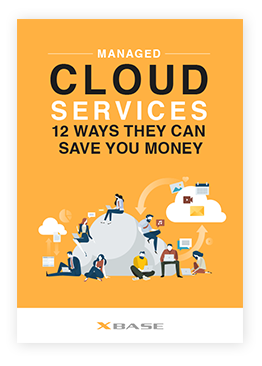Before diving into the topic, let’s first look at something that isn’t usually found in IT blog posts: farming. In a way, agriculture is a numbers game. Farmers invest in seeds, knowing that not all of these will sprout and produce crops. However, those that do sprout are made to flourish so that profits from the harvest more than make up for the lost seeds.
Why bring this up? It’s to set up a contrast: unlike with farming, investing in IT resources is not a numbers game, especially when it comes to cloud spend. The benefits reaped from correctly chosen and properly utilized cloud services don’t make up for fruitless services. This is because, unlike in farming, lost investments are not a given in cloud computing, but rather are needless and avoidable.
What is wasted cloud spend?
Cloud computing allows you to pay a cloud services provider (CSP) to let you use their machines for your business needs. For example, instead of running your custom supply chain management app on your own computers, you can have the app hosted in the cloud instead. And if you need to implement a backup system for your sensitive data, you can store the data in the cloud instead of having to worry about physical drives that could be misplaced, stolen, or damaged.
In essence, what you pay for are computing power and storage space without the need to buy your own hardware and software, which are expensive. However, as illustrated above, cloud-based computing power and storage space are means to ends — and spending on those means without achieving your ends is wasteful. Here’s what that looks like in concrete terms:
Idle resources
Companies sometimes pay for computing resources such as computing instances or virtual machines (VMs) by the hour but tend to use only some of these resources 24/7. To illustrate, activities done in live or “production” environments, such as running, monitoring, and maintaining websites and business applications run non-stop in the cloud.
In contrast, non-production activities such as developing, staging, testing, and quality assurance testing of new apps are normally done during the 40-hour workweek. Companies make the mistake of using the same type of resources used for production activities, which means that companies burn money on 128 idle hours every week.
Another example of an idle resource are instances that are completely abandoned but not deleted. These are wasteful because you’d still have to pay for the software licenses allocated for these zombie instances.
At other times, companies retain unused VMs, but tend to them anyway. Year after year, they waste time, money, and effort updating, monitoring, and managing these — all for no tangible benefit. And even when they delete their idle VMs, sometimes they forget to delete the storage volumes that were attached to these. Unattached volumes could accumulate and cause companies to waste huge amounts of money on these every month.
Overprovisioned resources
To handle increased web traffic during peak seasons, businesses pay CSPs more money to allocate more cloud servers for their websites. When IT admins forget to revert to normal provisioning when it’s the low season once again, they spend extra for nothing.
In fact, when provisions for an instance are one size bigger than what is necessary to handle the actual workload, 50% of the spend for that instance goes down the drain.
Stop overspending on the cloud
One of the quickest ways to save money on the cloud is by plugging up all your leaks. Fully assess how you spend on and use your cloud resources to discover the idle resources you could eliminate as well as the provisions you could rightsize.
From there, you can implement other ways to realize cloud savings, such as taking advantage of cloud discounts and bringing your own licenses (BYOL) in the cloud. Take note, however, that these methods tend to be complex and require technical expertise. For instance, CSPs’ discount packages tend to contractually lock customers into using particular types of clouds or paying for a certain level of use, either of which could lead to wasted cloud spend anyway.
BYOL, on the other hand, is the method of migrating or sharing existing on-premises (on-prem) software licenses (such as Windows Server licenses used for on-site servers) over to the cloud (such as Microsoft Azure) without voiding these licenses. This means huge savings because you don’t have to purchase multiple licenses for the same software product across multiple platforms.
However, license restrictions may make it more costly for you to run certain software (such as Oracle Database) in some clouds over other clouds or on-prem. In other words, you have to look deep into the cost implications of your license usage to optimize your spending there.
Consider a hosted private cloud
Most wasted cloud spend is incurred by not knowing how to optimize the use of a public cloud. Despite the initially cheaper pay-as-you-go model of the public cloud, businesses end up overspending there because they:
- Tack on extra cloud services as a contingency for future needs that only seldomly come to be. As we’ve discussed earlier, having idle resources is an excellent way to burn money.
- Have little to no visibility over how the public cloud operates. This makes it hard to see if there is needless spending on bandwidth and infrastructure, as well as whether there are additional support and management fees or not.
- Lack the bandwidth to fully understand IT cost drivers. As technology becomes more advanced, more cost-efficient software solutions are created, and the hardware that precede the latest ones normally become much more affordable. However, your IT staff may be too busy with day-to-day operations to recognize and seize opportunities that improve cloud performance and reduce costs.
To avoid these pitfalls, you can consult with IT experts to help you optimize your use of the public cloud, or you can switch to a hosted private cloud that:
-
Helps you choose only the services you need
Private clouds have all the advantages of public clouds, but not all private cloud providers are the same. Choose one that customizes your cloud to match your IT needs on an ongoing basis and manages it on your behalf to fulfill specific goals. That provider should grant you greater flexibility over the resources you use — i.e., you can configure your instances and scale them as you need to — as opposed to having to waste money on contingencies. -
Grants you visibility over operations
Unlike with a public cloud, a private cloud’s resources are allocated solely to you. This means that additional costs are virtually impossible to hide, though that does not stop some unscrupulous providers from trying. Therefore, choose one that provides transparency in both cloud resource usage and cloud costs. Specifically, you want to be able to see real-time analytics as well as monitoring of bandwidth and ports, among other transparency measures. -
Actively seeks ways to optimize your cloud spend with you
Beyond the sake of providing transparency, managed cloud service providers monitor and measure usage to proactively make the most of your cloud. Furthermore, top-notch providers like XBASE offer vCIO services that stay on top of IT advancements to provide you with options that could significantly lower your costs.
Download our free eBook!
A little research goes a long way when making IT-related decisions. This eBook will give you a better idea of what managed cloud services can do for your business -- grab your copy today!
Whether you choose a public cloud provider or the flexibility of a hosted private cloud, XBASE would be more than happy to help you optimize your cloud spend. Let our Exponentially Better™ managed cloud services empower your business to keep up with IT, increase the ROI of your cloud investments, and grant you more time and capability to run your company successfully. Schedule a FREE consultation today.

